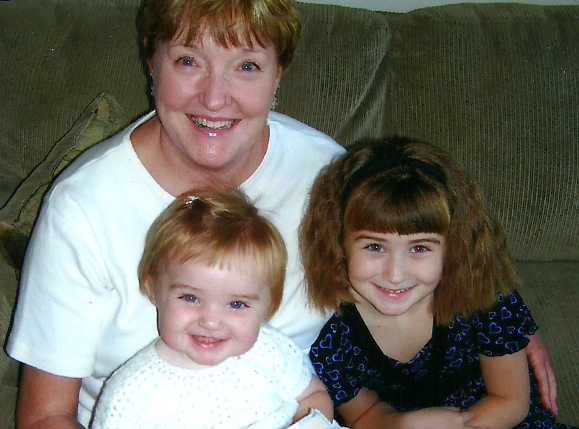So many cops are married to nurses,” the great novelist and screenwriter Richard Price once observed. “It’s just the way it is. You know, mom’s a nurse, dad’s a cop…. That’s where they’re going to meet their spouses – following up a homicide, following up an aggravated assault. And you go to the same hospital maybe three times a week for a couple of months, you get to know these people, and they get to know you pretty well. And it’s kind of like this medical courtship around mayhem.”
So it was for Russ DeSantis and Virginia “Ginny” Endrom, cop and nurse respectively, both from mixed Irish-Italian families on Staten Island. He was guarding a prisoner and she was working in the surgical intensive care unit when they met at St. Vincent’s Hospital, located in Staten Island’s heavily Irish West Brighton neighborhood. You could say I’d have never met my wife, Kate, if not for “St. Vinny’s,” as it is known to locals. Russ and Ginny, after all, would go on to become my in-laws. It was also at St. Vinny’s, four decades later, that all four of my own children would be brought into the world. And all those years later, St. Vincent’s was still staffed largely by Irish-American nurses from the neighborhood, who could be as funny and nurturing as they could be demanding and stern.
“While on duty it was serious,” my mother-in-law recalled recently. “The Sisters of Charity ran the hospital and there was no goofing off. But the nurses would get together after hours and enjoy ourselves. Also, the housekeeping and food service staff were mostly Irish-American, all good-natured and fun loving and a smile on their face while they did their job with no grumbling.”
With Hillary Clinton running for the White House, with many pundits and experts asking if women can finally “have it all,” the issues of gender and work are everywhere these days. Yes, there are some who wish to return to the 1950s and 1960s world of Father Knows Best and Mad Men, when Dad went off to work in a fedora and Mom stayed home in her apron tending to the children.
But as generations of immigrant and working class women know, this was more myth than reality. These women were always working – and not because they wanted “a career.” They needed money. These women have always “had it all” – work, family and, oh yeah, lots of bills to pay.
And one of the few secure paths to employment for these women – along with teaching and domestic work – was nursing.
Going back to the Famine and the U.S. Civil War, nuns as well as lay immigrant nurses served on the nation’s battlefields, or tended the ill in teeming urban tenements.
By the late 19th century, large numbers of Irish American women were still becoming nuns, “but the attractions of the caring professions were felt,” writes James R. Barrett in The Irish Way: Becoming American in the Multi-Ethnic City. When the controversial Irish American activist Margaret Higgins Sanger went into nursing, Barrett adds, she was “following a well-worn path in the Irish community” since nursing was “the only profession other than teaching open to Irish women as late as the 1880s.” By that point, “city hospital and nursing programs were loaded with Irish women.”
Two of my own aunts, Alice and Bernadette, also went into nursing, while a third (along with my sister, Mary) worked in different capacities in hospitals.
It is interesting that blue collar households are often labeled “traditional” – a not-so-polite euphemism for ultra-conservative, especially when it comes to gender.
And yet, these are the very households that blazed trails for female workers. Whereas upper class husbands might have once refused to allow their wives to even look for work, this was often not a big deal in “traditional” Irish Catholic homes.
“In many working class communities, mothering had long included being a good provider, as well as a good nurturer,” writes Rutgers University professor Dorothy Sue Cobble, who studies labor and gender. “Employment, rather than being incompatible with good mothering, was viewed as ‘a fulfillment of a mother’s duty to her children.’”
Over the years, the West Brighton neighborhood in Staten Island has changed, though the St. Patrick’s Day parade on nearby Forest Avenue is still one of the nation’s largest. When her children were born, Ginny left St. Vincent’s – which isn’t even St. Vincent’s anymore, having been bought out by another hospital and renamed Richmond University Medical Center in 2007.
That’s the year my youngest daughter, Rose, was born. Those were all crazy days, when my kids Maggie (2001), T.J. (2003), Tim (2005) and Rose were born. But each time, it was the nurses at St. Vincent’s – the ones who do all the real work, who have for generations – who made it slightly less crazy, who got us through it.
When they weren’t chatting up a cop down in the lobby, that is. ♦


Tom,
What a great love story indeed!….reminded me of my growing up. My mom went out to work while raising 6 kids born in 6 years. My dad got sick and out she went…..no complaining, she just got it done. People say I’m just like her, my mom, Mary Brady. How blessed am I!